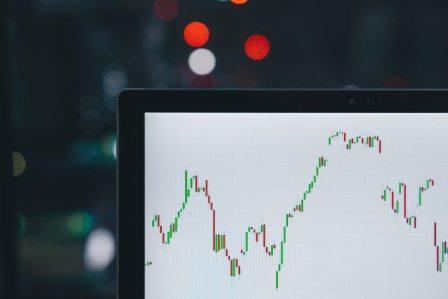How to forecast in times of crisis?
How to forecast in times of crisis?
The current global health crisis has led many companies to cancel their forecasts. The general uncertainty and the lack of visibility on the behavior of economic actors make their forecasting exercise very difficult. As usual barometers are experiencing historic declines, anxiety spreads.
In this context, many companies have gone into “survival mode” and are concentrating on the essential: restarting their activity and regaining cash. It is also “sight navigation”. However, it is also essential to try to plan for the future. We don’t yet know the psychological effect of confinement on the teams, but if yours are numb or down, just imagine that your competitors are not sleeping. Even if your projections could prove to be wrong, the exercise is important: it puts in a state of pro-activity, encourages to plan actions, to study more closely your competitors, to review the strategy, to try to “give back a cape” instead of being wait-and-see or undergo. The ability to project in the future is a reassuring element, whether for investors or for your teams, even if everyone can expect difficult times.
After the staggering phase of containment and the sudden cessation of activity, we are beginning to see the emergence of macro forecasts. Economists imagine more or less optimistic scenarios. This exercise takes shape as new information is received and the new situation is understood and its consequences notably on supply and demand.
But listing scenarios is not enough. It is better to “probabilize” them and imagine scenarios much more distant than the “ranges” of variation that we are used to provide. The situation is so new that it would be risky to rely on historical analogies or habits.
Then, to avoid communication and interpretation errors on your forecasts, I recommend caution: adopt a “probabilistic” vocabulary. For this you can use probabilistic scales called WEP’s (for “Words of Estimative Probability”). These WEPs are already commonly used in certain fields such as military intelligence or medicine. And even if you cannot come up with a highly probable scenario but only roughly equiprobable alternative scenarios, you can communicate them and we can perfectly accept the idea that “we do not know”. This is also what we hear now at the highest levels of states: the health crisis may have taught the leaders to be more modest. The fact of relying recently on scientific communities, which by their profession know that it is necessary to doubt and avoid certainties, is undoubtedly for a lot.
Finally, if you don’t have too much methodology or forecasting tools, you can for example try to combine collective intelligence and a predictive market tool.
What is that ?
Collective intelligence is already well known. There are various methods. It is practiced in a structured way (specific workshops) or sometimes without knowing it (for example a budget meeting organized by a commercial director with his team of regional managers).
If we assume that the group performs better in decision-making and crisis management than the isolated individual, we can expect it to be similar for forecasting. But it is not easy to reach a consensus when opinions and individual interests diverge. You need to keep an open mind and especially beware of the many biases that can come into play in group meetings (influence, leadership / follow-up, hierarchical game …) especially closed groups (market knowledge often very limited, not representative).
You can also experiment “predictive markets”. These lesser-known tools are simply inspired by the functioning of a stock market. Unlike a spot survey, a predictive market has the advantage of being dynamic, just like the stock market. The operating principle is that the financial markets are recognized for their ability to anticipate what will happen in the real economy. On the financial markets, prices go up or down depending on forecasts of future profits. They also experience episodes of extreme variations (speculative runaway or panic movements) and are very sensitive to uncertainty (volatility). If the market does not know how to anticipate an unexpected exogenous shock, it can however give an interesting indication of the medium-term recovery period (horizon +6 months). It is therefore a complementary tool to others (for example monitoring advanced indicators, barometers of purchasing managers, etc.).
These “predictive markets” are already used in general news forecasting (politics, sports, etc.) but also sometimes in the corporate sector (pricing, volumes, technological trends, product mix, etc.).
In the company, this consists in setting up a “serious game” with a group of participants. On an online platform the participants will act as if they were investors. The values corresponding to different choices (scenarios) or to a future value. The platform is used either in “open” mode to all connected Internet users (if we are looking to expand the base of participants in “crowd” mode) or in “closed” mode (preferable if there is a confidential dimension or if we want to be selective by ensuring that we only have people who know the subject well). The playing time is fixed in advance: in rapid mode (a few days) or longer (1 month or before a decision deadline …). Participants receive the same number of credits at the start. Each participant is hoping to win (this is the speculative dimension of the markets) and they will change their positions over time (concretely buy or sell scenarios) as they integrate new information and take into account the changes of quotes that result from the buy / sell decisions of other participants. At the end of the game, the scenario(s) will appear with their associated rating or the most likely future value according to the group.
This method can also be very useful when it comes to drastically reduce costs. Many companies will have to abandon certain projects that yesterday were considered strategic. To facilitate this decision-making, predictive markets can help to select the projects to be continued or stopped.
Finally the severity of the crisis can go so far as to question the business model of the company. Whether it is an absolute necessity or simply an opportunity study, we must continue to plan for the future. Again predictive markets can be part of the strategic marketing tools to study opportunities, trends, test concepts, innovations or brands.
But beware, a predictive market game is not at all easy to organize. Having tested it, I found that it was better to have:
– a sufficient number of participants, with a maximum variety of profiles and opinions (this choice is undoubtedly determining for the result),
– participants who are really interested, available to play every day (if the game takes place over more than one day) and motivated (incentive or gift to be won depending on the number of points achieved),
– animation (to train and above all keep the participants active throughout the period of the game).
I hope you will find this post useful and wish you good luck with your forecasts!
To go further, here are some useful links:
– the “WEP” (words of estimative probability):
https://en.wikipedia.org/wiki/Words_of_estimative_probability
– predictive markets:
https://fr.wikipedia.org/wiki/March%C3%A9_de_pr%C3%A9diction
https://info.prediki.com/ (example of platform, free for ESOMAR member agencies during the COVID19 lockdown restrictions)
Photos : D. Beemer, YouXVentures and M.B.M. on Unsplash



